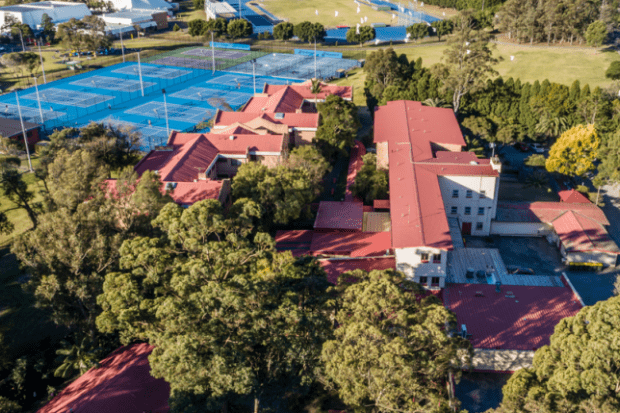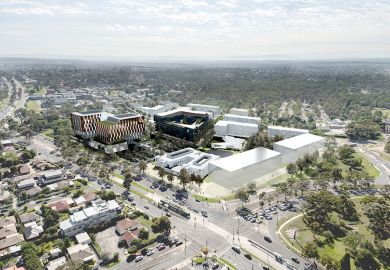Australian universities are selling off non-core real estate and ratcheting up the earning potential of their campuses as house prices and Covid financial pressures escalate.
Suburban-based institutions such as Western Sydney, Edith Cowan and Griffith universities embraced property speculation in the years before Covid-19, putting minor campuses on the market to finance the purchase or redevelopment of others. Now, central city universities are following suit – particularly in Sydney, where property values are soaring despite coronavirus-induced job losses and an exodus of workers who no longer feel tied to city life.
Most institutions will not confirm how much money is changing hands, citing commercial confidence. But the University of Technology Sydney (UTS) hopes to raise A$100 million (£53 million) from property deals.
UTS is consolidating its student residences on campus, retaining a building that houses 720 students while selling three off-campus complexes that accommodate about 400. UTS has also sold a nearby warehouse, which it reportedly bought just 20 months earlier for A$11.3 million, and is considering the long-term redevelopment of an old building in its Haymarket precinct.
The University of Wollongong is also consolidating its student accommodation on campus. It has listed three off-campus residential blocks for sale, prompted by the need to offset Covid costs and by low demand from international students.
“With sufficient capacity available in our on-campuses residences to meet foreseeable demand, it makes sense to release these prime real estate assets on to the local market,” said chief operating officer Damien Israel.
Wollongong has terminated a private partnership that it entered in 2014 – ostensibly for 39 years – to develop on-campus accommodation for up to 1,000 students. The university bought out its partners, led by British-based infrastructure company Balfour Beatty, using part of A$350 million it raised through bonds issued late last year.
UNSW Sydney reportedly hopes to earn A$100 million by selling car-parking facilities. While the university would not confirm the report, a spokeswoman said UNSW was “continuing to look for the best ways to maximise use of our campuses, including opportunities to generate revenue from our estate”.
The University of Sydney and the Australian Catholic University have sold vice-chancellor’s residences in the prime suburbs of Woollahra and Mosman, reportedly reaping a combined A$15.6 million – almost five times their purchase price about 30 years ago.
While both sales were planned before Covid, Sydney said it was “looking at what might be surplus to our needs given the current strong market, and may put some properties forward for sale over the next 18 months”.
In December, Western Sydney University sold its Caddens Corner shopping centre for a reported A$80 million. The complex, developed on the university’s defunct Werrington South campus, had been officially opened just a month earlier.
In March, Swinburne University of Technology sold premises in central Melbourne’s Flinders Lane, reportedly for A$40 million. The university had bought the property about two years earlier to develop a “vertical campus”. A spokeswoman said Swinburne had decided to relocate its “city presence” to nearby Federation Square.
In April, RMIT University reportedly raised A$133 million from the sale of a central Melbourne building. A leaseback arrangement enables RMIT operations to stay there for five years.
A spokeswoman said the building had not been deemed a “long-term strategic asset. The sale process was expedited in light of Covid-19-driven financial constraints,” she added.





